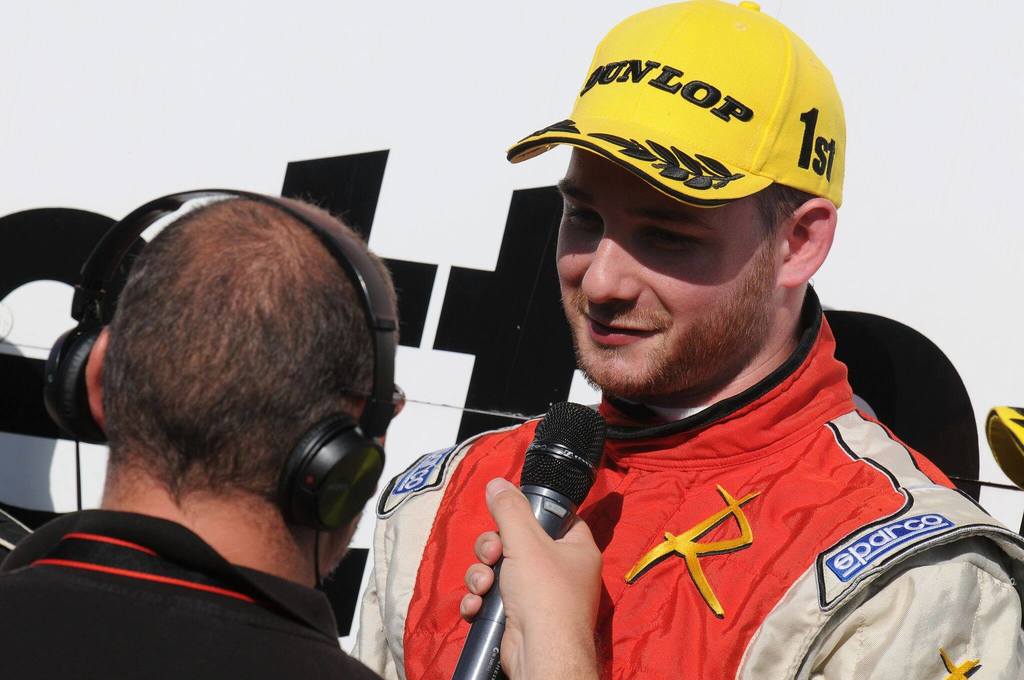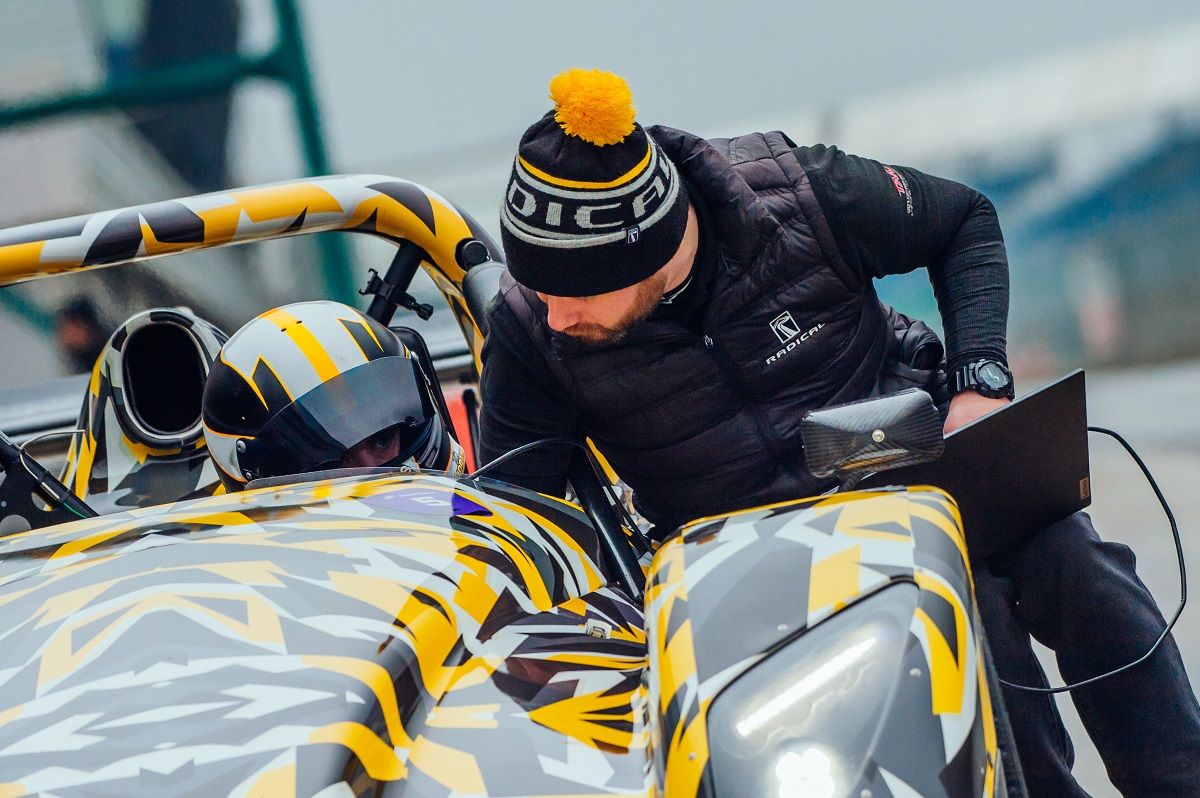After joining as an apprentice in 2009, Pinkerton was a part of the development programmes for the Radical SR3 SL and RXC models, before joining Radical Performance Engines full-time in 2014. His work on the famous 3.5-litre twin-turbocharged EcoBoost V6 cemented his reputation as a performance engine specialist. It successfully produced over 650bhp with industry-leading service intervals, validating the RXC Coupe, RXC Spyder and GT3 as powerhouse sports prototype racing and road cars.
Soon, Pinkerton turned his attention to the four-cylinder 2.3-litre EcoBoost unit, and as the lead development driver on the programme, helped launch the SR10 in 2020. His ability to combine experience from both sides of the pit wall was crucial to unlocking the SR10’s considerable potential.
Today, we sat down with him to discuss the most recent update to Radical’s most popular model – the SR3 XXR – as Radical’s Head of Research & Development.

Two-time Radical SR1 Cup champion, James Pinkerton, now heads up Radical Motorsport's research & development team from their headquarters in Cambridgeshire, UK
R: With over 1500 sold worldwide, the SR3 is obviously a very popular car already. Why develop it further?
Pinkerton: It is our most popular model to date, yes. It’s a really good question, because it’s a platform that we’ve had for over a decade now, that’s already seen iterative improvements with each model upgrade. But it gets to a point where there’s diminishing returns from what you can do – you can no longer look at one area and make a significant improvement because it’s already such a well-developed car.
Because of this, we took the approach to make marginal gains across the entire car, looking at each system and thinking, ‘how can we make this better for the end user?’ We could do a lot of really interesting, engineering projects with it, but they wouldn’t necessarily benefit the end customer. We took the approach to only develop things that were going to have a positive impact on the overall user experience.
Having been at the track on many cold days myself, I know more than anyone just how much you want to get in the car, get out on track, and drive. We wanted to make it as easy as possible for our customers to plug and play – get to the track, start up, go racing. No faff.
R: What updates would you say have the most positive impact on user experience?
Pinkerton: We’ve basically overhauled the entire system with the new drive-by-wire system, which allows customers to start the engine a lot easier. It might sound silly, but it means that as soon as you start the car, you don’t have to blip the throttle or anything like that, it’ll start up like a normal road car, and automatically go into fast idle map – this basically means it brings the engine up to temperature quicker.
We’ve also changed the cooling system. It heats the engine oil up a lot faster. Essentially the car is ready to go within 10 minutes of starting up. On the old platform, this would probably have to be done across two heat cycles, so you could be 30 minutes in before the engine is even remotely near to being ready to go on track. So, that’s just one area that sticks out for me.
R: So focusing on usability and the end customer experience was a big thing for you – how did you prioritise which areas to improve?
Pinkerton: We got a lot of customer feedback on systems that they liked, and more importantly, systems that they didn’t like. One of these was the electronics system, which we’ve overhauled and made significantly better now. We’ve also put a lot of functionality into the new electronics package, such as the cold start strategy as well.
The pit limiter was another feature that was frequently asked for on the old car, however, we didn’t have the hardware to support it. Now, the XXR has a pit limiter function as we have the hardware to support it now.
R: As a racer yourself, how will these user experience updates benefit those in a race setting?
Pinkerton: One of the main improvements for those racing, will definitely be the pit limiter function. Now that it’s a lot easier to track your time through the pit lane, you don’t have to worry about getting a penalty for going too fast. You don’t have to worry about being too conservative with your speed, you just set the pit limiter speed and it’s one less thing to worry about. It just takes away that error of margin.
We’ve also improved the fuelling, which is really important in a race, because it means you can run it down to zero, saving as much weight as possible without causing reliability issues. It also charges perfectly now, which at a race meet is vital when you’re coming in and out of the pits constantly.
R: Once you know what to look at, what steps do you take to develop a new car? What is step one?
Pinkerton: First, we need to set the functional requirements. We need to think about what we want to achieve from the car, what areas we want to improve, performance targets and durability targets. For example, we were quite clear from the start that we wanted to improve service life of the engine by 25%. That was quite a definitive target, and I’m now pleased to say that our recommended engine refresh intervals have gone from 40 hours to 50 hours. Adding 25% durability to a platform makes a big difference, and was a big project, so before the engine even saw a car, we did over 40 hours of engine dyno testing alone to achieve this. The repeatable nature of the engine testing on the dyno allowed us to track the engine life throughout too.
So with the help of the engine dyno testing, we first developed the platform and ensured that it met its performance targets. We made sure it produced the power we wanted it to produce and the torque delivery that we wanted as well. Once we’d gone through the performance and validation tests, we then started to look at durability testing.
The durability testing was probably the most arduous and stressful testing we’ve ever done on an engine – we basically left it running loops of Silverstone on an engine dyno. After this, we could do periodic oil burns to see the analysis of the engine and what materials were being deposited into the oil. From that, we get an indication of engine wear, which in turn determines the correct time to change the engine oil. We learned a huge amount through this testing, and it’s here where we learnt that our new XXR engine can be run to 50 hours without any abnormal engine wear.
R: After the hours on the dyno, you completed a lot of real-world testing too. How important is that in the development process?
Pinkerton: Engine dyno testing is really good at gathering critical data, but this doesn’t always correlate to the real world. Real-world testing on track, shows us any tweaks we need to make to the engine calibration, and also allows you to validate everything that you’ve just tested and proven on the dyno. It essentially proves that everything you’ve learnt on the dyno already, is correct. I always say there’s no better dyno in the world than the racetrack.
We could prove that the performance on the dyno could also be done on track. This was done over numerous tests at Portimao, Donington and Silverstone. At this stage of the development process, we were probably running two tests on track a week.
The SR3 XXR is available to order now through Radical Motorsport’s international dealer network. See below for more information.
MORE INFO
